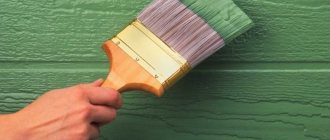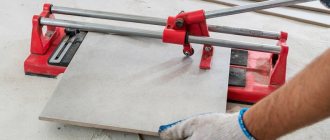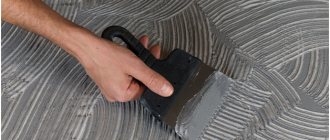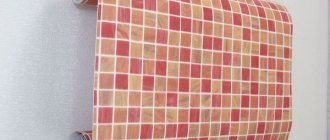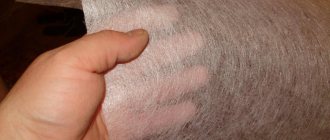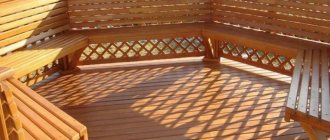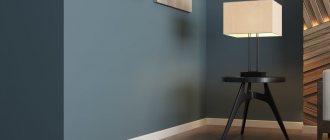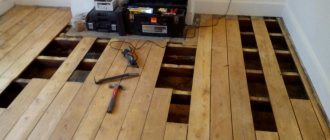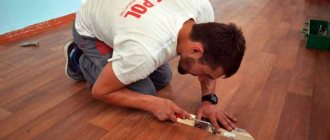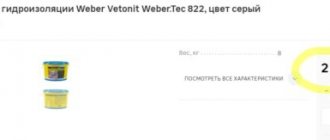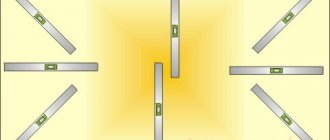When renovations begin in an apartment or private house, you have to go around more than one hardware store in search of the necessary building materials, and the issue is not only in the decorations, tiles or wallpaper, but also at the heart of it all. How correctly the adhesive mixture is selected will determine the quality of the repair and how long it will last. Let's look at the features and scope of elastic tile adhesive, how it can help with repair work and what limitations it has.
Why are elastic mixtures needed?
Cladding with elastic glue occurs if the base is flexible or movable, for example, not a solid wall, but plywood, or the “shrinkage” of the house has not yet occurred, this applies to new buildings. Even if you buy a good cement-based tile adhesive, after a year or two the decoration will begin to crack or “slip” off the wall, and that’s because the adhesive base was not elastic enough.
The mixture must adapt to deformable substrates, so when choosing tile adhesive, pay attention to elastic properties .
FAQ
Why do you need special glue?
The main reason why glue for large-format porcelain tiles must be specialized is the large weight of the material. Porcelain tiles are very dense and durable. In addition to this, the area of the slabs can reach very impressive values, for example, when we are talking about slabs up to three meters high. What glue can handle large-format porcelain tiles?
A composition with maximum adhesion to the base of the slab and elasticity is required. Be sure to familiarize yourself with the properties of the adhesive declared by the manufacturer. Remember - different types of glue are required for different rooms, types of substrates and operating conditions. In addition, there is a big difference between laying tiles on the floor and on the wall.
What are the requirements for adhesive for porcelain tiles?
Ceramic granite is a relatively recent “invention”. As soon as it appeared, it immediately became popular on the construction market, and therefore it is taken quite often. In terms of its properties, it can be compared with natural stone and ceramic tiles, and porcelain stoneware surpasses the latter in many respects.
Porcelain tiles are unique. A large number of colors, durability, high resistance to various influences, does not allow moisture to pass through - all this can be said about this building material.
Porcelain tiles are a truly interesting material for use in cladding.
Today, porcelain tiles are quite relevant. It is especially often used where a serious operational load is expected - pavilions, subways, all kinds of stations and airports, as well as warehouses.
Important! It is better to take only specialized mixtures. Then the porcelain stoneware will be fixed correctly.
Adhesives for porcelain tiles
Let's move on to the requirements that the adhesive purchased for laying porcelain tiles must meet.
- Level of water absorption of the material. It, as is already clear from the previously mentioned information, should be minimal. This is explained by the density of the structure of porcelain stoneware - a material that is unable to absorb either water or glue. In this case, you have to rely on special substances that increase the adhesion of the material to a level where it can absorb glue.
The structure of porcelain stoneware is dense
- Material hardness. Porcelain tile is a material that does not bend. At the same time, it is quite fragile in relation to the effects of temperature, as well as load. Porcelain tile adhesive must be resistant to cold or heat, as well as elastic to withstand the load that appears between the base of the porcelain tile and the outer covering of the wall or floor.
Important! Elasticity plays a doubly important role when it comes to a “warm floor” system.
- Stability of porcelain stoneware. With a material like this, you need to think about what kind of weather it will withstand and in what location. As a rule, when choosing an adhesive for exterior use, the number of cycles is inspected. A good adhesive for porcelain tiles with a high level of frost resistance will have a value of about 50 or even more.
Is it possible to level the walls, floor and ceiling with tile adhesive?
Initially, the adhesive for laying tiles was not planned to be used to level the surface, which means that this method of application is the result of folk ingenuity. We will mention several cases where glue can be used during alignment.
- Cracking of the screed due to incorrect technology for laying the material, as well as poor-quality composition of the adhesive previously used for laying the tiles.
- When the distance to the door opening is too short to use self-leveling mixtures.
- Partial peeling in several places throughout the room.
- Shedding of the top layer after pouring.
Not always, but in general, you can level surfaces with tile adhesive
However, leveling with glue has limitations, according to which this method may not always be successful. And this method is not capable of solving serious problems. In this case, it is better to use bulk mixtures - they are more reliable and durable.
Tips for choosing porcelain tiles
Consistency of tile adhesive - what should it be?
Each manufacturer of the adhesive composition decides for himself what the proportion for diluting the dry adhesive mixture and water will be. As a rule, the ratio is 20 to 5.
Preparation of tile adhesive
However, other ratio options that can be found on the packaging are not excluded. The changes are due to a different composition of the glue, for example, the presence of PVA or other components, which means you need to add more or less glue or water.
How much glue do you need?
There is a question that interests everyone who carries out facing work - how much glue should be used. For most manufacturers, the answer to this question can be found directly on the packaging. Another place to look for an answer is the instructions for use.
Important! The indicated numbers can be and even most likely will be very relative - in reality, expect different values.
Tile adhesive consumption rates per square meter
A number of conditions determine how much glue will be used.
- Type of glue. There are thick and liquid variations, each of them differs in its consumption indicators. For cement-based tile adhesive, diluted with water, the consumption is from one to two kilograms per square meter, which is quite normal.
- Tile type. Porcelain tiles absorb the least amount of glue, glazed tiles absorb a little more, and the most “gluttonous” are cotto and hand-made tiles.
- Laying surface. Ideally, it should be even and smooth, and then very little glue is needed on such a surface. The more porous the surface, the more adhesive mixture will be needed, since such material will absorb it.
Laying porcelain tiles on the floor
- Weather. Environmental conditions when working with tile adhesive should be quite optimal. The temperature, for example, should be around +18-25 °C. If the temperature is higher, then you need to add more mixture due to moisture evaporation. Temperatures below zero are not even considered at all - at them the glue loses its properties.
- Professionalism of the installer. The most important point in determining the glue consumption is the master himself. It determines how much glue will be used. His experience, installation technology, spatula used - all these “little things” directly affect the glue consumption.
Many factors influence glue consumption
Important! A V-shaped spatula is ideal for installation. It will be a little worse with a U-shaped spatula. It will be easiest to find a spatula with square teeth of different shapes.
Table. Glue consumption.
Tile side size in cm Trowel tooth length in mm Recommended adhesive consumption in kg/sq.m.
| < 5 | 3 | 2 |
| 5-10 | 4 | 2,5 |
| 10-20 | 6 | 4 |
| 20-30 | 8 | 5 |
| 30-40 | 10 | 6,5 |
| > 40 | 12 | 8 |
There is a nuance - when using this table, you need to take into account possible changes in the direction of increasing the glue layer.
Physico-mechanical properties of mixtures
The elastic mixture is a dry powdery substance, white or gray in color, it all depends on the component. But manufacturing plants also offer the consumer a ready-made mixture that is ready for facing work and does not need to be mixed with water.
Average mixture characteristics:
- density value - from 1400 to 1500 kg/m³;
- consumable properties - from 1.3 to 2 kg per 1 m² square;
- adhesion level value - from 1 to 1.5 MPa;
- cycles in which elevated temperatures are maintained - 80-90;
- strength properties - from 4 MPa;
- maximum shift is 0.6 mm.
The physical and mechanical properties of the elastic adhesive mixture are suitable for laying tiles in entrances, on basement floors, in production facilities, bathrooms and swimming pools.
Laying tiles on a cement bonded particle board: features of the technological process
Experts say that ceramic flooring is not the best solution in combination with wood, because the materials have different characteristics:
- When wood is exposed to external factors, the material changes in size: when humidity increases, the wood expands, and when humidity decreases, it dries out, which leads to deformation of the tile floor and the appearance of cracks.
- Wood is not resistant to destructive processes and therefore has a shorter service life than ceramic tiles. It often happens that the wood substrate is subject to destruction over time, and in order to repair or replace it, ceramic tiles are dismantled.
- It is possible to install lightweight tiles on cement-bonded flooring. If the tile is too heavy for flooring, it may fail over time.
Glue Features
The components in the composition act as a plasticizer for tile adhesive; it is also called polyurethane with two components. The components of the glue are special hardeners and polyurethane resins. When mixing the components, an adhesive solution for deformable surfaces is obtained. Mix two-component adhesive using construction mixers or a drill, while wearing a specialized attachment for mixing construction materials.
If you read the instructions for the glue, it says that the glue dries within 30 minutes, but you shouldn’t rush and it’s better to give the mixture more time for 1-2 days, then the surface will be securely fixed and you can continue construction work.
Glue is a highly elastic material; it can be used to glue things that are held in place only by screws or nails. A gel-like plastic mass, this is what the structure of the mixture looks like.
Suitable for use in everyday life and on construction sites; it will hold old tiles that have a glazed structure.
Consumer qualities of elastic adhesive
Adhesive solutions with maximum plasticity can be used for covering old glazed tiles.
If the elastic solution has the required degree of elasticity, it will “survive” the thermal expansion of the coating, vibrations and other types of deformations without any damage. That is, the greater the expected deformation load on the base, the higher the plasticity indicators of the solution should be. Elastic adhesive for installing tiles on DSP must have the following qualities:
- elasticity;
- moisture resistance;
- frost resistance;
- high adhesion;
- wear resistance;
- bending strength.
Adhesive solutions with maximum plasticity can even be used for cladding old glazed tiles. Such compositions are not at all afraid of extreme operating conditions, which is why they are so actively used for finishing “damp” rooms. The advantages and disadvantages of solutions can also be judged from consumer reviews:
Unis tile adhesive
- A year ago I decided to tile the floor, but first install an electric heating system. I used regular tile adhesive, which after three months began to crack at the seams. Six months later I had to re-floor the floor, but this time I used an elastic Ceresite mortar. So far nothing has come unglued anywhere;
- Elastic solutions in tubes are a very convenient thing! I tiled the apron in the kitchen, used Moment glue, and I quickly and very successfully completed the job. So far nothing has fallen off or become loose;
- I needed to spruce up a homemade partition in my living room. I decided to try not ordinary, but plastic glue. Of course, it costs a little more than cement, but there are no complaints at all about the adhesive ability of the mortar.
Scope of application
Polymer adhesive is used for minor construction repairs and during construction; some types of mixtures are used for repairing automobile glass. When choosing a transparent solution, it can not only reliably glue the surface, but also not leave marks. It is a good camouflage for cracks and does not interfere with visibility when driving a car.
It is applied for:
- concrete having a cellular structure;
- chipboard;
- cement particle boards;
- drywall;
- plywood;
- aerated concrete;
- old tiles;
- concrete screed;
- wood;
- porcelain stoneware;
- marble and glass mosaics;
- acid-resistant and clinker tile products.
Main advantages and disadvantages of DSP
DSP sheets have a lot of advantages:
- can be used for covering any surface: both floors and walls;
- ease of installation;
- no requirements for surface preparation;
- resistance to high humidity.
Composition of the CBPB board
The last indicator is important. The fact is that most materials under the influence of liquid and steam are deformed, swell, and change their size. All this does not apply to CBPB made from a mixture of wood shavings and cement; the material is not at all afraid of water.
The smooth structure of sawdust slabs is the reason why they do not need to be leveled before laying ceramic tiles; applying one or two layers of the primer mixture is sufficient. Pre-treatment with an emulsion composition will improve adhesion and allow the ceramic to firmly adhere to the wooden base.
Despite the large number of advantages, these plates also have disadvantages:
- high price;
- the fragility of the slab, which makes it necessary to be careful when laying;
- heavy weight of the structure, which causes difficulties during installation.
The disadvantages of this type of flooring are compensated for by the high performance characteristics of the DSP - after the glue dries, it will become a very strong and reliable base for any type of ceramic tile.
Cement particle board
Limitations in use
Polymer adhesive is considered universal, but its use is not always possible, for example, for heated floors and places with constant heating, it is better not to use the mixture. This can lead to the glue starting to melt and the surface to collapse.
For ceramics and porcelain stoneware, you need to choose an adhesive with the appropriate marking; adhesive for tiles and wood flooring will not work.
In general, about adhesive for porcelain tiles
Installation of porcelain tiles is a rather scrupulous procedure, primarily due to the characteristics of the material. Low moisture absorption forces us to look for elastic adhesives, since ordinary cement adhesives will not work here.
It is important to select adhesive for porcelain tiles taking into account many criteria.
The solution is the type of glue discussed in the article due to its ability to hold the material and not let water in. The choice of such adhesive depends on two parameters - where it is used and what features the tile has. We will consider them below.
Where to use glue
If you want to install porcelain tiles outdoors, then, logically, you need to look for an adhesive for outdoor use. Any other one won't do.
The street is a rather aggressive “environment” with its constant temperature fluctuations, various types of precipitation, exposure to UV rays and wind. Don’t forget about mechanical damage as a result of various types of events. Therefore, it is necessary to use not only a durable material in the form of porcelain stoneware, but also an adhesive that can firmly adhere the material to the surface and also withstand various aggressive influences.
Outdoor cladding requires the use of extremely durable adhesives
Don’t forget about such an interesting point as the location of the cladding on the street. Porch, plinth, concrete surface - each place needs its own approach, which means “its own” glue. For the porch, as a rule, water-repellent options are used, for the base - water-repellent with increased fixation. Any adhesive for exterior use is suitable for concrete surfaces.
Loggia, balcony, veranda - there will be a different approach here. Since they are located outside, but still attached to the apartment or house, the temperature there will be lower. For these places you need to take adhesives that are highly resistant to moisture and frost.
Resistance to various aggressive influences – that’s what a good glue should have
Finishing the inside is much easier - there are not a lot of all kinds of difficulties. But this does not cancel the rule of selecting glue depending on the location. In the bathroom, for example, you need moisture-resistant elastic adhesive. In addition, you need to seal the seams there with grout (waterproof, of course).
It is also worth using fungicidal glue for the bathroom - it will prevent the formation of fungus and mold. For the floor - glue with a plasticizer, which makes it more elastic. For walls - adhesive with a high level of fixation, which will withstand the high tensile loads caused by porcelain tiles.
Internal cladding is a simpler matter, but you still have to select the appropriate adhesive for each room
About the features of the tiles
Anyone who has experience in repairs knows the golden rule of fixing any tile - the thickness of the mortar = the thickness of the tile. This is the only way to achieve correct fixation.
Porcelain tiles and their markings: what do the pictures and numbers on packaging and catalogs mean?
However, thickness is not the main parameter of the tile. What is more important is the length and width, since as the size of the tile increases, its weight increases. And the heavier the tile, the greater the level of fixation the glue should have.
Let's take two tiles as an example. The first size will be, for example, 100x100, and the second, say, 300x300. The second tile is three times larger than the first, but they can both be fixed with universal glue. Large tiles are another matter. To hold it you need a more serious, reinforced glue.
The characteristics of the tile itself, and especially the dimensions, must be taken into account
Laying principles
How to lay tiles with elastic adhesive on wood plywood.
- Wooden layers with a thickness of 25 mm or more must first be laid on the beam and secured with self-tapping screws. We place the beams closer to each other, a distance of approximately 50 cm.
- Dust and other contaminants are removed from the surface, then a primer is applied and left to dry.
- Apply the adhesive base on top of the floor.
- Then apply the mixture to the back of the tile with a notched trowel; no need to use a thick layer.
- Next, the tiles are laid on the surface; if the tiles have a pattern, immediately prepare the order in which they go.
- We wait for the glue to dry completely and start grouting; special mixtures are sold for this.
- After the repair work is completed and the grout has dried, wet cleaning is carried out.
Review of manufacturers
There are undisputed leaders on the market that produce the most popular mixtures. You can also find “young” brands that are no less high quality.
Litokol
Professional adhesive from this manufacturer, Litoflex K80, is used for laying porcelain stoneware and wall tiles. It can even be used using the “tile on tile” technique for arranging heated floors, plinths, and facades. Mass consumption is very low due to high adhesion.
Mapei
These adhesives are characterized by fast drying - in just 12 hours the surface will be ready for use. They contain polyurethane components, which give the mass high plasticity. Excellent adhesion is ensured by isocyanate hardeners and special fillers. Using Mapei adhesives, you can even glue tiles to concrete, asphalt, reinforced polyester, plaster, and asbestos.
Ceresit
The Ceresit brand produces several high-quality elastic adhesives. Ceresit SM17 25 kg (D) is very popular, it is appreciated by professionals and beginners. Thanks to sufficient adhesion, you can glue new tiles onto old, glossy ones. The glue is moisture-resistant, frost-resistant, and the presence of polyurethane allows it to withstand sudden temperature fluctuations. Ceresit R-710 is used for gluing quartz-vinyl tiles and a number of other unusual materials. Ceresit SM-11 is purchased for finishing uneven surfaces; the glue is very easy to use.
Kiilto
Kiilto PL 250 adhesive is produced in Russia and is made on the basis of polyurethane. In addition to tiles, you can use it when installing insulation, polystyrene, and PVC. It is permissible to work with the product even at low temperatures - up to +5 degrees.
Knauf
Knauf Flex adhesive is ideal for working with complex surfaces, floor and wall tiles of any type and texture. The material is considered economical, inexpensive, and highly elastic.
Ilmax
Ilmax 3130 is produced in Belarus and is in high demand due to its low price and high quality. Special additives make it possible to glue tiles to the product even in the area of stoves and fireplaces, not to mention ordinary, “cold” substrates.
Bergauf
Bergauf Mosaik is recommended for working with the most capricious materials, including a variety of mosaics and transparent tiles. It is ideally white in color, perfect for damp rooms, and is not afraid of even direct contact with water (after hardening).
Working with elastic adhesives is easy, even a beginner can handle it. They should not be applied to a wet surface, as this will lead to a rise in capillary moisture and ruin the masonry. By following technology, you can perform the job efficiently and it will last for many years.
